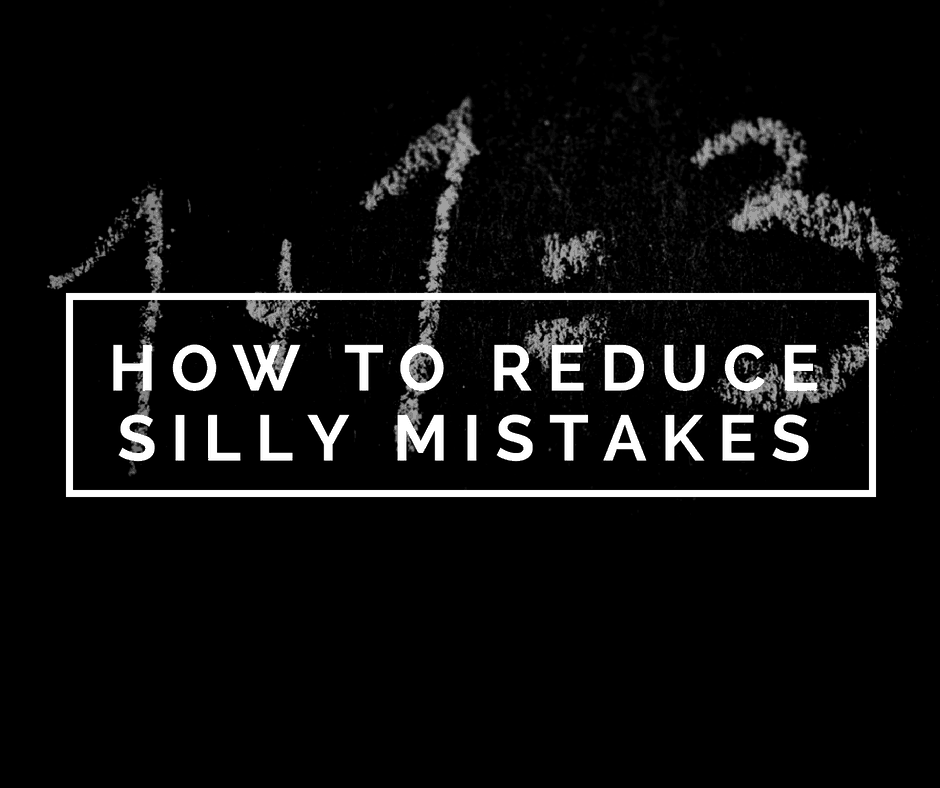HOW TO AVOID SILLY MISTAKES DURING YOUR EXAM
Make it easy to write down working
The vast majority of silly mistakes happen because a child did their working in their head. Frustratingly, many children avoid the great effort of finding a sheet of rough working paper or even opening up their notebooks to find a fresh page!
As your child is sitting down to work, encourage them to take out their notebook from the beginning (try not to physically do it for them though) so they’re less tempted to do everything in their heads. Also make sure that they’re doing their work in pencil rather than pen as it will be easier to correct mistakes.
Work on technique
Writing notes and perfecting exam technique could make all the difference to your child’s exam performance. In fact, when marking mock tests, we’ve noticed that the children that make notes on their exam papers are far more likely to get good scores.
A good tutor should encourage your child to work on exam technique by telling them when it’s appropriate to write down their working. It’s important to reinforce these techniques at home where possible. If you’re working through a question with your child, try not to just tell them to write down their working, make the effort to point out where it’s appropriate to do so.
Doing some mental calculations is fine – for example, they’ll need to do 6 times 8 in their heads – however, children often don’t realise that they should jot down this number before they go on to the next step of their working.
Writing appropriate notes isn’t only important in maths, this can be done in English and reasoning too. In English, notes are particularly important in questions like “Which of the following statements is false?”. Children can greatly improve their accuracy with such questions by eliminating the answers as they go along. Eliminating wrong answers can also be very helpful in non-verbal reasoning.
In verbal reasoning, there are different written techniques depending on the question style. Even if you’re not sure what the appropriate techniques are, you can check your child’s work to see if they’ve jotted down any working and can let your child’s tutor know if you think their technique is lacking.
Make sure that your child finds their mistake
So many students think they’ll save time and effort by using a process of elimination to get to the right answer. At first they’ll say the answer is 60, they’ll find out they’re wrong and they’ll change their answer to 42, then maybe to 90, and they’ll continue to spit out answers until they get to the right one. Break this habit early by pushing your child to explain their original answer and identify where they went wrong.
By asking your child to explain their logic you should, at worst, gain a better idea of which areas they’re misunderstanding; at best, your child will learn to spot their own errors and starts to correct themselves. Correcting your own mistakes is an absolutely critical exam skill that is often overlooked. By encouraging a self-review process, your child can develop a skill that will help them throughout their school lives.
Don’t make allowances for errors
A lot of families like to write down a child’s score with corrections and without: children will often come to lessons and tell me they got “38 the first time but 45 once I’d done corrections”. This approach is fine in the very early days of exam preparation but if you’re only a couple of months away from the exam, this approach will have to stop. By allowing your child to focus on their second set of results, you’re teaching them that they’ll get a second shot of success which, unfortunately, isn’t how real exams work.
Your child should still do their corrections but, as harsh as it sounds, don’t encourage much discussion of their second result as your child needs to know that it doesn’t really count.
Put aside time for checking answers
If you’re working under timed conditions, try shortening the time you allocate to doing the full paper and then specifying that your child now has 5 minutes to check his/her answers. For example, in a 45 minute paper, give your child 40 minutes to work and then time them again by allowing 5 minutes for checking. During the checking time, make sure that your child is not allowed to leave the table early as they’ll rush this process otherwise.
The first couple of times you do this, it may be helpful to go check alongside your child whilst encouraging them to follow a four step process:
Read the question again (you may need to do this aloud so your child doesn’t skip this step).
Think through the steps that were needed to solve the question correctly.
Review the rough working page to see if these steps have been followed thoroughly and correctly.
Check that your child wrote down the answer they meant to write down.
Remember to get your child to check their work before it’s been marked. They should start by reviewing the questions that they found most difficult and then can review the rest if they have time.
Improve Short-Term Memory
Does your child make mistakes when copying a number from one page to another? Do they forget what step they were due to complete next? There are a few reasons that this could happen but trying to improve your child’s memory should be your first port of call.
Go Fish! is a card game that is often recommended as a memory-builder. You can play this with a normal set of cards or, if you want to build vocabulary at the same time, we have a specially designed set of vocabulary cards designed for the SATs and the 11+. Find Go Fish! here.
For years, we’ve also been recommending that parents buy fish oils as these are scientifically proven to increase memory function, particularly Omega-3. You can buy kid-friendly tablets at pharmacists.

